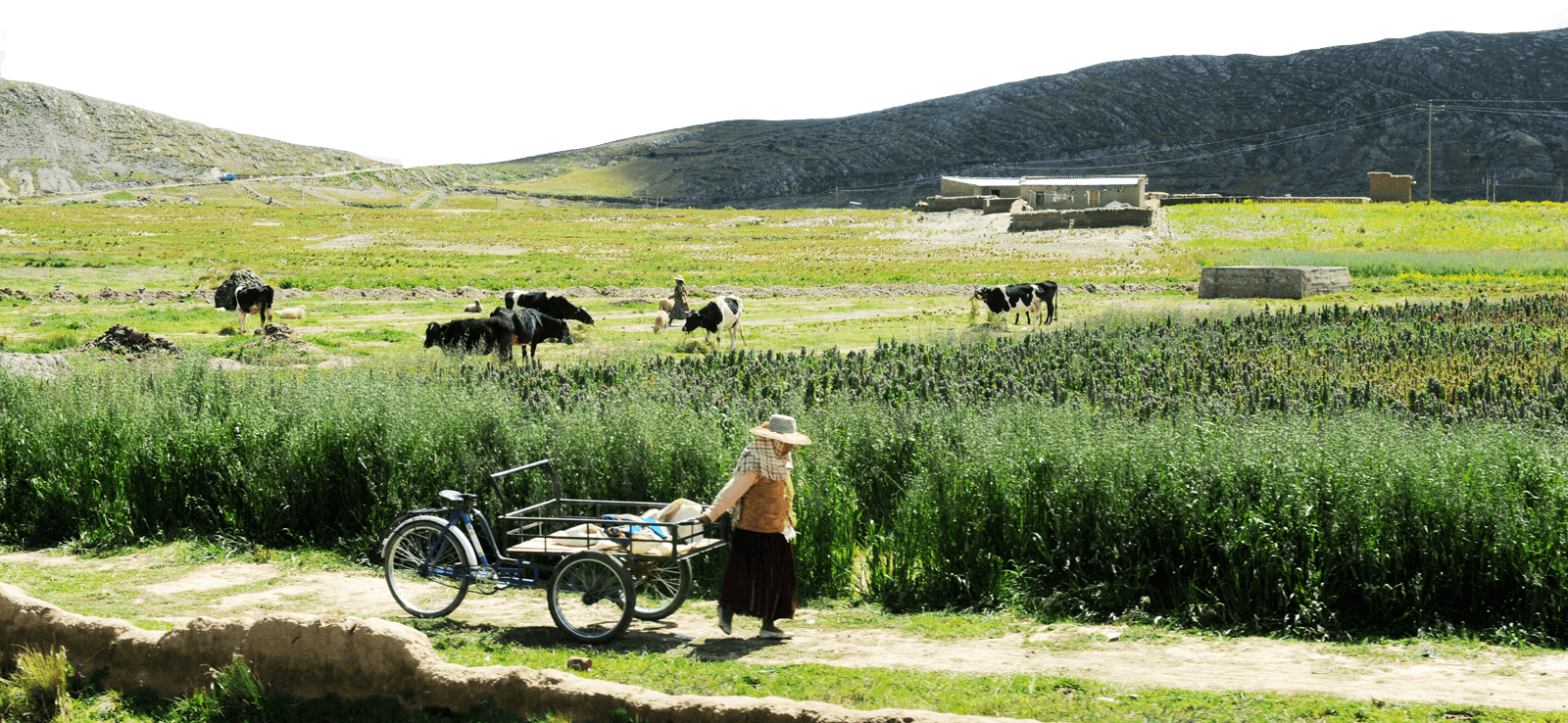On the Benefits of Small Farms
Food First Backgrounder, Winter 1999, Vol. 6, No. 4
For more than a century, pundits have confidently predicted the demise of the small farm, labeling it as backward, unproductive, and inefficient—an obstacle to be overcome in the pursuit of economic development. But this is wrong. Far from being stuck in the past, small-farm agriculture provides a productive, efficient, and ecological vision for the future. If small farms are worth preserving, then now is the time to educate the world’s policy-makers about the genuine value of small farm agriculture.
Small Farm Productivity
How many times have we heard that large farms are more productive than small farms, and that we need to consolidate land holdings to take advantage of that greater productivity and efficiency? The actual data shows the opposite—small farms produce far more per acre or hectare than large farms. One reason for the low levels of production on large farms is that they tend to be monocultures. The highest yield of a single crop is often obtained by planting it alone on a field. But while that may produce a lot of one crop, it generates nothing else of use to the farmer. In fact, the bare ground between crop rows invites weed infestation. The weeds then make the farmer invest labor in weeding or money in herbicide.
Large farmers tend to plant monocultures because they are the simplest to manage with heavy machinery. Small farmers, especially in the Third World, are much more likely to plant crop mixtures—intercropping where the empty space between the rows is occupied by other crops. They usually combine or rotate crops and livestock, with manure serving to replenish soil fertility. Such integrated farming systems produce far more per unit area than do monocultures. Though the yield per unit area of one crop—corn, for example—may be lower on a small farm than on a large monoculture farm, the total production per unit area, often composed of more than a dozen crops and various animal products, can be far higher.
This holds true whether we are talking about an industrial country like the United States, or any country in the Third World. Figure 1 shows the relationship between farm size and total production for ftfteen countries in the Third World. In all cases, relatively smaller farm sizes are much more productive per unit area—200 to 1,000 percent more productive—than are larger ones. In the United States the smallest farms, those of 27 acres or less, have more than ten times greater dollar output per acre than larger farms. While in the U.S. this is largely because smaller farms tend to specialize in high value crops like vegetables and flowers, it also reflects relatively more attention devoted to the farm, and more diverse farming systems.


 Help Food First to continue growing an informed, transformative, and flourishing food movement.
Help Food First to continue growing an informed, transformative, and flourishing food movement.




